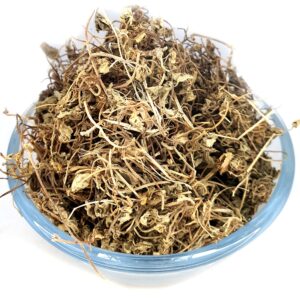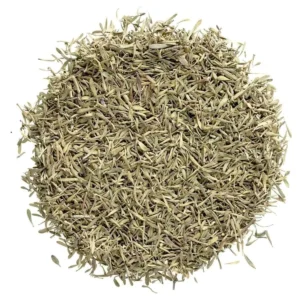Description
Common Names:
- Akalkara
- Spilanthes Acmella (Botanical name)
- Toothache Plant
- Akarkara (In Hindi)
Botanical Classification:
- Family: Solanaceae
- Genus: Withania
- Species: W. somnifera
Forms:
- Dried Root: Commonly used in traditional medicine.
- Fresh Leaves and Flowers: Occasionally used fresh in culinary or medicinal applications.
- Extracts and Oils: Used for concentrated therapeutic purposes.
Origin:
- Native Region: South America, Africa, and Southeast Asia.
- Cultivation: Now grown widely in India, particularly in tropical and subtropical regions, and used in Ayurveda and Unani medicine.
Nutritional and Chemical Composition:
- Active Compounds: Contains spilanthol, known for its analgesic (pain-relieving) and anti-inflammatory properties.
- Nutrients: Rich in alkaloids, flavonoids, and tannins, contributing to its medicinal effects.
Health Benefits:
- Pain Relief: Especially effective for relieving toothache and other oral discomforts due to its numbing effect.
- Anti-inflammatory: Reduces inflammation and is used to treat conditions like arthritis and joint pain.
- Antiseptic: Its antimicrobial properties help in treating infections, particularly in the oral cavity.
- Immune Support: Boosts the immune system, helping the body fight off infections.
- Aphrodisiac: Traditionally used to enhance sexual vitality and treat reproductive issues.
Uses:
- Culinary: In some cultures, fresh leaves and flowers are used in dishes to impart a tingling sensation.
- Traditional Medicine: Widely used to treat oral issues like toothache, gum infections, and sore throats, as well as joint and muscle pain.
- Topical Application: Used in ointments and oils for its pain-relieving and anti-inflammatory effects on the skin and joints.
Other Traditional Uses:
- Oral Health: Often used to treat toothaches, gum problems, and other oral issues due to its anesthetic properties.
- Joint Health: Provides relief from arthritis and joint pains when applied topically.
- Sexual Wellness: Used traditionally to improve sexual vitality and treat related health conditions.







